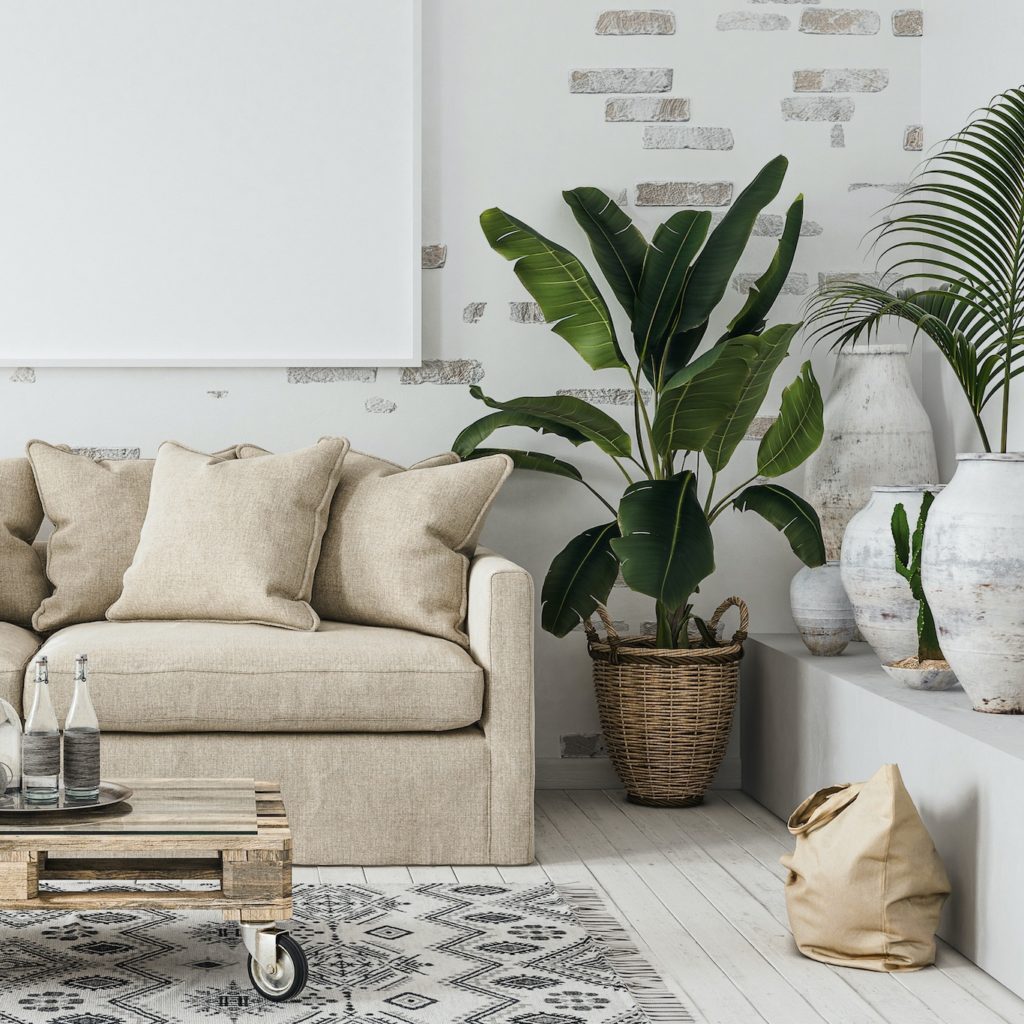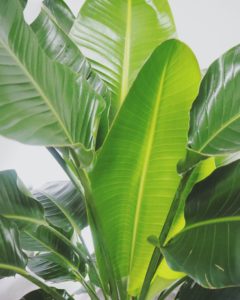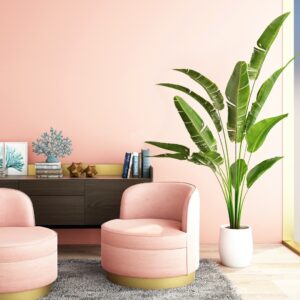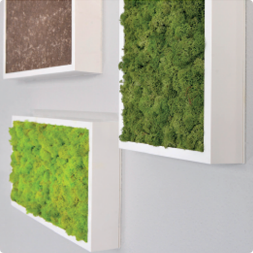The Ultimate White Bird of Paradise Care Guide

How to Care for a White Bird of Paradise
The White Bird of Paradise is an absolute fan favorite, and we can see why it has made a tropical splash in the plant community. The Strelitzia nicolai’s long arching leaves makes its mark in any room, a real showstopper. This very stand-out plant is a must-have and adds an ambiance of elegance to your home that no other plant seems to compare to. The White Bird of Paradise got its name due to the leaves that form shapes that resemble that of a bird’s head, but as an indoor plant, you will not see this plant bloom unless under unique circumstances. Nonetheless, its beauty is unparalleled to any other plant. So, are you ready to learn what it takes to give this unique and beautiful plant a long healthy life? Let’s get into our White Bird of Paradise care guide then!
This plant comes in two different sizes. A three-foot and four and a half foot, with a ten-inch, grow pot, and a fourteen-inch with a grow pot. Making this one of the largest plants we offer, its size makes it ideal for people looking to fill a corner or a lot of space as a real statement piece for any home. This plant adds a tropical vibe to any room and creates an immediate change to the look of whatever area it is in.
Watering Your Plant
One of the most crucial aspects of White Bird of paradise care is watering your plant correctly. It can seem tricky, but once you get the hang of it and a routine down, it should be smooth sailing. The White Bird of Paradise is a heavy drinker and requires a lot of waterings to thrive and grow at a steady rate. Make sure to wet the soil well with each watering and only let it dry to a moist level before you water it the next time. We highly suggest investing in a soil probe to help you in this process. We love our Soil Sleuth probe to help with this process making it easier for you to check soil moisture. The finger method is unreliable and does not let you measure the middle of the soil, which is imperative in telling if the plant needs watering. It can reduce the frequency of the need to water your new plant friend in the long run, saving time, energy, and protecting your plant from drowning.
Some ways to tell your plant is being underwatered can include dry leaves or leaves with crispy tips and edges. Extreme leaf splitting, breakage, and withered leaves, as well, it is easy to fix an underwatering problem, so do not fret too much if this comes up. For any further reading on watering tips, check out our Watering Guide!
In addition to water, you need to ensure that you are feeding your White Bird of Paradise the right nutrients. We ship all of our plants pre fertilized, and you do not need to give them any extra nutrients until at least six months after you receive your new plant buddy. After that six months is up, you will want to fertilizer your white bird of paradise quarterly to keep it healthy and happy.
This plant also does well in humid climates, so although you can certainly have a White Bird of Paradise in Arizona or any other dryer state, we might recommend something different for our desert living plant owners! Floridians, THIS IS the plant for you!
Selecting the Right Lighting for your White Bird of Paradise
This plant requires a large amount of light to thrive. Sunlight is necessary for its care, so if you do not have a relatively sunny spot with high-light in your home, we do not suggest investing in this particular plant. Find an east, west, or south-facing location to get your plant the maximum amount of sunshine, and adjust the placement seasonally.
 Another important factor to take into consideration is proper cleaning.
Another important factor to take into consideration is proper cleaning.
Keep your plant free of dust will increase its ability to soak in that sunshine. Cleaning is a pretty painless process. Soak a cloth in water and add a little bit of light soap as a cleanser. Then you can take each leaf and wipe them down, and DO NOT forget the underside. This will help make sure there is no light-blocking dust and aids in pest control.
Rotating your plant is vital to do as well, to ensure growth happens on all sides. The regular rotation of your Bird of Paradise will ensure that it will be more symmetrical.
Does your White Bird have drooping leaves or new leaves that will not open up? This can be a sign of your home light levels being too low for your plant. Also, leaf browning can be another sign of a lack of light. Move your white bird of paradise to a brighter place and closely monitor your plant to see if the problems disappear.
If you see water not absorbed into the soil, a common misconception is that it means you are overwatering, but that is not always the case. It can mean your White Bird is not receiving enough light. This is why observation is such an essential part of the White Bird plant care regimen.
Pest Control
On the note of cleaning and pest control, let’s talk bugs. If not cared for properly, this plant tends to develop a mealybug and mite problem. Mealybugs have a cotton white look to them, and they sit at the base of the White Bird leaves or underneath them. It is so vital to irradicate them quickly because they can cause a lot of damage to the leaves and the plant’s overall health. How can you get rid of them, you ask? Just like you would do a regular cleaning, a light soapy solution on the leaves and wiping it down daily- maybe even twice – until they are gone should do the trick.
Pruning
Pruning is not something that needs to be done regularly, but it is an integral part of plant white bird of paradise care in general. Trim away dead or old leaves that are drooping or have brown spots, not only for aesthetics but for the overall plant health. The leaves on the White Bird of Paradise have a natural split in their leaves, do not worry, it is supposed to be there. It allows light to access deeper into the plant and hit lower, more hidden areas with sunlight. It can also help let wind pass through them more smoothly, keeping the leaves from being torn up or damaged if it’s outside or in a drafty home. If you do see some extreme leaf splitting, you might want to consider that the leaves are letting you know they are not getting enough light, so this is something to consider and look out for as well.
Fun Fact: did you know that the White Bird of Paradise is commonly mistaken for a banana plant?
 We have discussed watering, lighting, and cleaning your white bird of paradise. Now it is time to talk accessorizing! Let’s talk planters. We recommend one of our clay pots or even one of our phoenix planters. Although our Bird of Paradise is one of our taller plants, some people want EVEN MORE hight to it to make it the center of attention, so pop it on a plant stand as well as in a planter, and you are set to go. Whatever you do when you get your plant, please DO NOT remove it from its grow pot. It can cause harm and damage to the plant.
We have discussed watering, lighting, and cleaning your white bird of paradise. Now it is time to talk accessorizing! Let’s talk planters. We recommend one of our clay pots or even one of our phoenix planters. Although our Bird of Paradise is one of our taller plants, some people want EVEN MORE hight to it to make it the center of attention, so pop it on a plant stand as well as in a planter, and you are set to go. Whatever you do when you get your plant, please DO NOT remove it from its grow pot. It can cause harm and damage to the plant.
The White Bird of Paradise might seem a little daunting, but we have full confidence you will find a routine that works for you and your new plant BFF—interested in learning more about the White Bird? Follow the PLANTZ Instagram for more plant care tips.


















